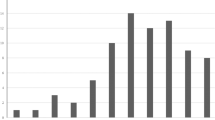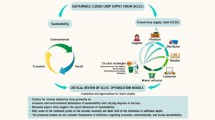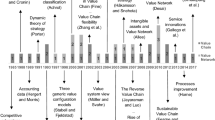Abstract
In the green procurement management of firms, by rigorously evaluating and selecting suppliers, firms can effectively reduce the operation risk and improve the sustainable value-added capacity of supply chain. This paper designs a novel green supplier selection mechanism based on an uncertain information environment. First, a new green supplier evaluation index system is designed by considering the economic, environmental, and social drivers from the perspective of sustainable development. Then, the Z-numbers are applied to describe the fuzziness degree of the decision information and the reliability degree of the fuzzy attribute values. We re-define the possibility degree of trapezoidal fuzzy numbers, and on that basis, we define the possibility degree of Z-numbers. A ranking method based on the possibility degree of Z-numbers is applied to select the green suppliers. Finally, the implementation, applicability, and feasibility of the proposed mechanism are highlighted by providing a decision-making example of green supply selection together with the comparison analysis with the existing methods. From the comparison analysis and discussion, the information processing method in our proposed mechanism can effectively avoid the information loss caused by the direct aggregation of fuzzy information, which shows that the proposed mechanism is more feasible and effective than other congeneric methods. The results suggest that the proposed mechanism of green supplier selection can handle multi-attribute decision-making problems in an uncertain cognitive information environment with Z-numbers, consistent with human cognition.
Similar content being viewed by others
Data Availability
The authors confirm that the data supporting the findings of this study are available within the article.
References
Wu C, Lin Y, Barnes D. An integrated decision-making approach for sustainable supplier selection in the chemical industry. Expert Syst Appl. 2021;184:115553.
Guarnieri P, Trojan F. Decision making on supplier selection based on social, ethical, and environmental criteria: a study in the textile industry. Resour Conserv Recycl. 2019;141:347–61.
Xu Z, Qin JD, Liu J, Martínez L. Sustainable supplier selection based on AHPSort II in interval type-2 fuzzy environment. Inf Sci. 2019;483:273–93.
Rao CJ, Goh M, Zheng JJ. Decision mechanism for supplier selection under sustainability. Int J Inf Technol Decis Mak. 2017;16(1):87–115.
Xing YM, Cao MS, Liu YJ, Zhou M, Wu J. A Choquet integral based interval Type-2 trapezoidal fuzzy multiple attribute group decision making for sustainable supplier selection. Comput Ind Eng. 2022;165:107935.
Tavassoli M, Saen RF, Zanjirani DM. Assessing sustainability of suppliers: a novel stochastic-fuzzy DEA model. Sustain Prod Consum. 2020;21:78–91.
Resat HG, Unsal B. A novel multi-objective optimization approach for sustainable supply chain: a case study in packaging industry. Sustain Prod Consum. 2019;20:29–39.
Gao MY, Yang HL, Xiao QZ, Goh M. A novel method for carbon emission forecasting based on Gompertz’s law and fractional grey model: evidence from American industrial sector. Renew Energy. 2021;181:803–19.
Krishankumar R, Gowtham Y, Ahmed I, Ravichandran KS, Samarjit KS. Solving green supplier selection problem using q-rung orthopair fuzzy-based decision framework with unknown weight information. Appl Soft Comput. 2020;94:106431.
Rao CJ, Goh M, Zhao Y, Zheng JJ. Location selection of sustainability city logistics centers. Transp Res D Transp Environ. 2015;36:29–44.
Qin JD, Liu XW, Pedrycz W. An extended TODIM multi-criteria group decision making method for green supplier selection in interval type-2 fuzzy environment. Eur J Oper Res. 2017;258:626–38.
Wang J, Rao CJ, Goh M, Xiao XP. Risk assessment of coronary heart disease based on cloud-random forest. Artif Intell Rev. 2022. https://doi.org/10.1007/s10462-022-10170-z in press.
Liu PD, Gao H, Ma JH. Novel green supplier selection method by combining quality function deployment with partitioned Bonferroni mean operator in interval type-2 fuzzy environment. Inf Sci. 2019;490:292–316.
Rao CJ, He YW, Wang XL. Comprehensive evaluation of non-waste cities based on two-tuple mixed correlation degree. Int J Fuzzy Syst. 2021;23(2):369–91.
Rao CJ, Wang C, Hu Z, Xiao XP, Goh M. Grey uncertain linguistic multi-attribute group decision making method based on GCC-HCD. IEEE Trans Comput Soc Syst. 2022. https://doi.org/10.1109/TCSS.2022.3166526 in press.
Rao CJ, Gao MY, Wen JH, Goh M. Multi-attribute group decision making method with dual comprehensive clouds under information environment of dual uncertain Z-numbers. Inf Sci. 2022;602:106–27.
Zadeh LA. A note on Z-numbers. Inf Sci. 2011;181:2923–32.
Noci G. Designing ‘green’ vendor rating systems for the assessment of a supplier’s environmental performance. Eur J Purch Supply Manag. 1997;3(2):103–14.
Min H, Galle WP. Green purchasing strategies: trends and implications. J Supply Chain Manag. 1997;33(3):10.
Walton SV, Handfield RB, Melnyk SA. The green supply chain: integrating suppliers into environmental management processes. Int J Purch Mater Manag. 1998;34(1):2–11.
Beamon BM. Supply chain design and analysis: models and methods. Int J Prod Econ. 1998;55(3):281–94.
Handfield R, Walton SV, Sroufe R, Melnyk SA. Applying environmental criteria to supplier assessment: a study in the application of the analytical hierarchy process. Eur J Oper Res. 2002;141(1):70–87.
Kainuma Y, Tawara N. A multiple attribute utility theory approach to lean and green supply chain management. Int J Prod Econ. 2006;101(1):99–108.
Parikka-Alhola K. Promoting environmentally sound furniture by green public procurement. Ecol Econ. 2008;68(1–2):472–85.
Hsu CW, Hu AH. Applying hazardous substance management to supplier selection using analytic network process. J Clean Prod. 2009;17(2):255–64.
Lee AH, Kang HY, Hsu CF, Hung HC. A green supplier selection model for high-tech industry. Expert Syst Appl. 2009;36(4):7917–27.
Chiou TY, Chan HK, Lettice F, Chung SH. The influence of greening the suppliers and green innovation on environmental performance and competitive advantage in Taiwan. Transp Res E Logist Transp Rev. 2011;47(6):822–36.
Tseng ML, Chiu ASF. Evaluating firm’s green supply chain management in linguistic preferences. J Clean Prod. 2013;40:22–31.
Yu Q. Approaches to green supplier evaluation under uncertain environment. Beijing: Beijing Institute of Technology; 2016.
Haeri SAS, Rezaei J. A grey-based green supplier selection model for uncertain environments. J Clean Prod. 2019;221:768–84.
Gao HG, Ju YB, Santibanez Gonzalez EDR, Zhang W. Green supplier selection in electronics manufacturing: an approach based on consensus decision making. J Clean Prod. 2020;245:118781.
Lu LYY, Wu CH, Kuo TC. Environmental principles applicable to green supplier evaluation by using multi-objective decision analysis. Int J Prod Res. 2007;45(18–19):4317–31.
Awasthi A, Chauhan SS, Goyal SK. A fuzzy multicriteria approach for evaluating environmental performance of suppliers. Int J Prod Econ. 2010;126(2):370–8.
Büyüközkan G, Çifçi G. A novel hybrid MCDM approach based on fuzzy DEMATEL, fuzzy ANP and fuzzy TOPSIS to evaluate green suppliers. Expert Syst Appl. 2012;39:3000–11.
Kannan D, Khodaverdi R, Olfat L, Jafarian A, Diabat A. Integrated fuzzy multi criteria decision making method and multi-objective programming approach for supplier selection and order allocation in a green supply chain. J Clean Prod. 2013;47:355–67.
Kannan D, Jabbour ADLS, Jabbour CJC. Selecting green suppliers based on GSCM practices: using fuzzy TOPSIS applied to a Brazilian electronics company. Eur J Oper Res. 2014;233(2):432–47.
Awasthi A, Kannan G. Green supplier development program selection using NGT and VIKOR under fuzzy environment. Comput Ind Eng. 2016;91:100–8.
Yazdani M, Chatterjee P, Zavadskas EK, Hashemkhani ZS. Integrated QFD-MCDM framework for green supplier selection. J Clean Prod. 2017;142:3728–40.
Demir L, Akpınar ME, Araz C, Ilgin MA. A green supplier evaluation system based on a new multi-criteria sorting method: VIKORSORT. Expert Syst Appl. 2018;114:479–87.
Gupta S, Soni U, Kumar G. Green supplier selection using multi-criterion decision making under fuzzy environment: a case study in automotive industry. Comput Ind Eng. 2019;36:663–80.
Dos Santos BM, Godoy LP, Campos LMS. Performance evaluation of green suppliers using entropy-TOPSIS-F. J Clean Prod. 2019;207(1):498–509.
Wu Q, Zhou LG, Chen Y, Chen HY. An integrated approach to green supplier selection based on the interval type-2 fuzzy best-worst and extended VIKOR methods. Inf Sci. 2019;502:394–417.
Angilella S, Pappalardo MR. Assessment of a failure prediction model in the European energy sector: a multicriteria discrimination approach with a PROMETHEE based classification. Expert Syst Appl. 2021;184:115513.
Govindan K, Kadziński M, Ehling R, Miebs G. Selection of a sustainable third-party reverse logistics provider based on the robustness analysis of an outranking graph kernel conducted with ELECTRE I and SMAA. Omega. 2019;85:1–15.
Bai CG, Satir A. Barriers for green supplier development programs in manufacturing industry. Resour Conserv Recycl. 2020;158:104756.
Tian C, Peng JJ, Zhang ZQ, Wang JQ, Goh M. An extended picture fuzzy MULTIMOORA method based on Schweizer-Sklar aggregation operators. Soft Comput. 2022. https://doi.org/10.1007/s00500-021-06690-5 in press.
Tsai WH, Hung SJ. A fuzzy goal programming approach for green supply chain optimisation under activity-based costing and performance evaluation with a value-chain structure. Int J Prod Res. 2009;47(18):4991–5017.
Zhang XL, Che Y, Zheng LC, Shu C. Optimization and decision-making of novel laser-induced thermal therapy for deep-lying tumor based on multi-objective genetic algorithm and three-way decisions method. Appl Math Model. 2022;104:682–700.
Liao HC, Wu XL, Mi XM, Herrera F. An integrated method for cognitive complex multiple experts multiple criteria decision making based on ELECTRE III with weighted Borda rule. Omega. 2020;93:102052.
Dou YJ, Zhu QH, Sarkis J. Evaluating green supplier development programs with a grey-analytical network process-based methodology. Eur J Oper Res. 2014;233:420–31.
Hashemi SH, Karimi A, Tavana M. An integrated green supplier selection approach with analytic network process and improved grey relational analysis. Int J Prod Econ. 2015;159:178–91.
Rao CJ, Gao Y. Evaluation mechanism design for the development level of urban-rural integration based on an improved TOPSIS method. Mathematics. 2022;10(3):380.
Xie Q, Ma H, Zheng X, Wang X, Wang FY. Evaluation and spatial-temporal difference analysis of urban water resource utilization efficiency based on two-stage DEA model. IEEE Trans Comput Soc Syst. 2021. https://doi.org/10.1109/TCSS.2021.3116043 in press.
Yilmaz MK, Kusakci AO, Aksoy M, Hacioglu U. The evaluation of operational efficiencies of Turkish airports: an integrated spherical fuzzy AHP/DEA approach. Appl Soft Comput. 2022;119:108620.
Duan CY, Liu HC, Zhang LJ, Shi H. An extended alternative queuing method with linguistic Z-numbers and its application for green supplier selection and order allocation. Int J Fuzzy Syst. 2019;21(8):2510–23.
Hamdan S, Cheaitou A. Dynamic green supplier selection and order allocation with quantity discounts and varying supplier availability. Comput Ind Eng. 2017;110:573–89.
Tayyab M, Sarkar B. An interactive fuzzy programming approach for a sustainable supplier selection under textile supply chain management. Comput Ind Eng. 2021;155:107164.
Tavana M, Kian H, Nasr AK, Govindan K, Mina H. A comprehensive framework for sustainable closed-loop supply chain network design. J Clean Prod. 2022;332:129777.
He YL, Wei CH, Long H, Raza Ashfaq RA, Huang JZ. Random weight network-based fuzzy nonlinear regression for trapezoidal fuzzy number data. Appl Soft Comput. 2018;70:959–79.
Ho HP. The supplier selection problem of a manufacturing company using the weighted multi-choice goal programming and MINMAX multi-choice goal programming. Appl Math Model. 2019;75:819–36.
Zhou R, Bhuiyan TH, Medal HR, Sherwin MD, Yang D. A stochastic programming model with endogenous uncertainty for selecting supplier development programs to proactively mitigate supplier risk. Omega. 2022;107:102542.
Jana C, Muhiuddin G, Pal M. Multiple-attribute decision making problems based on SVTNH methods. J Ambient Intell Humaniz Comput. 2020;11:3717–33.
Rao CJ, Xiao XP, Goh M, Zheng JJ, Wen JH. Compound mechanism design of supplier selection based on multi-attribute auction and risk management of supply chain. Comput Ind Eng. 2017;105:63–75.
Xu ZS, Da QL. Possibility degree method for ranking interval numbers and its application. J Syst Eng. 2003;18(1):67–70.
Mahdavi I, Mahdavi-Amiri N, Heidarzade A, Nourifar R. Designing a model of fuzzy TOPSIS in multiple criteria decision making. Appl Math Comput. 2008;206(2):607–17.
Patra K, Mondal SK. Fuzzy risk analysis using area and height based similarity measure on generalized trapezoidal fuzzy numbers and its application. Appl Soft Comput. 2015;28:276–84.
Xu ZS. Algorithm for priority of fuzzy complementary judgement matrix. J Syst Eng. 2001;16(4):311–4.
Krohling RA, Pacheco AGC, dos Santos GA. TODIM and TOPSIS with Z-numbers. Front Inf Technol Electron Eng. 2019;20(2):283–91.
Kang BY, Wei DJ, Li Y, Deng Y. A method of converting Z-number to classical fuzzy number. J Inf Comput Sci. 2012;9(3):703–9.
Funding
This work is supported by the National Natural Science Foundation of China (nos. 72071150, 71671135, 71871174).
Author information
Authors and Affiliations
Corresponding author
Ethics declarations
Ethics Approval
This article does not contain studies with human participants or animals performed by any of the authors.
Informed Consent
The contents of this article, author’s signature, and ranking have been carefully revised and reviewed, and all authors whose names appear on the submission agree to contribute.
Conflict of Interest
The authors declare no competing interests.
Additional information
Publisher's Note
Springer Nature remains neutral with regard to jurisdictional claims in published maps and institutional affiliations.
Rights and permissions
Springer Nature or its licensor holds exclusive rights to this article under a publishing agreement with the author(s) or other rightsholder(s); author self-archiving of the accepted manuscript version of this article is solely governed by the terms of such publishing agreement and applicable law.
About this article
Cite this article
Rao, C., Gao, M., Goh, M. et al. Green Supplier Selection Mechanism Based on Information Environment of Z-Numbers. Cogn Comput 15, 520–533 (2023). https://doi.org/10.1007/s12559-022-10055-x
Received:
Accepted:
Published:
Issue Date:
DOI: https://doi.org/10.1007/s12559-022-10055-x




